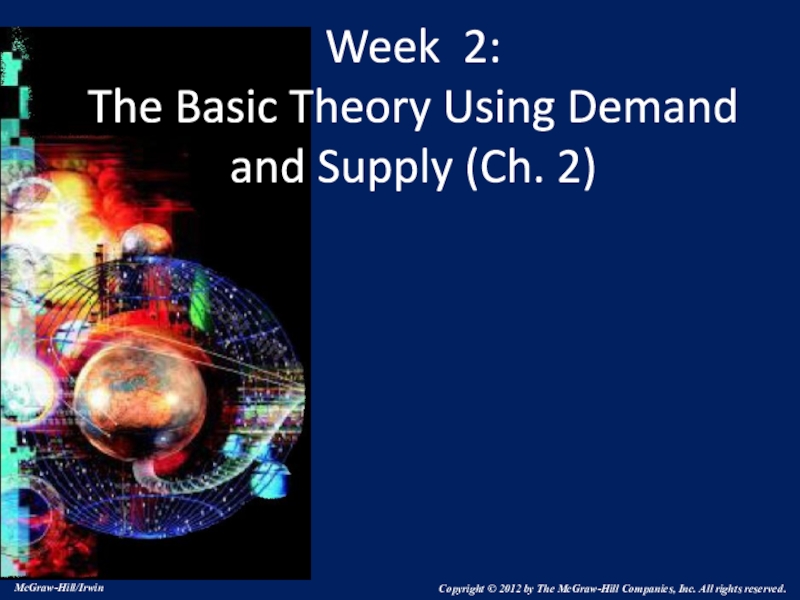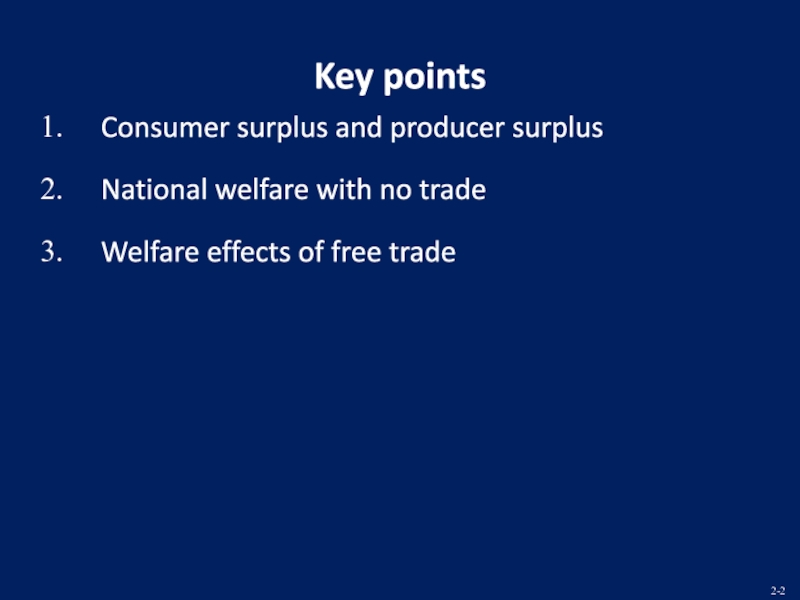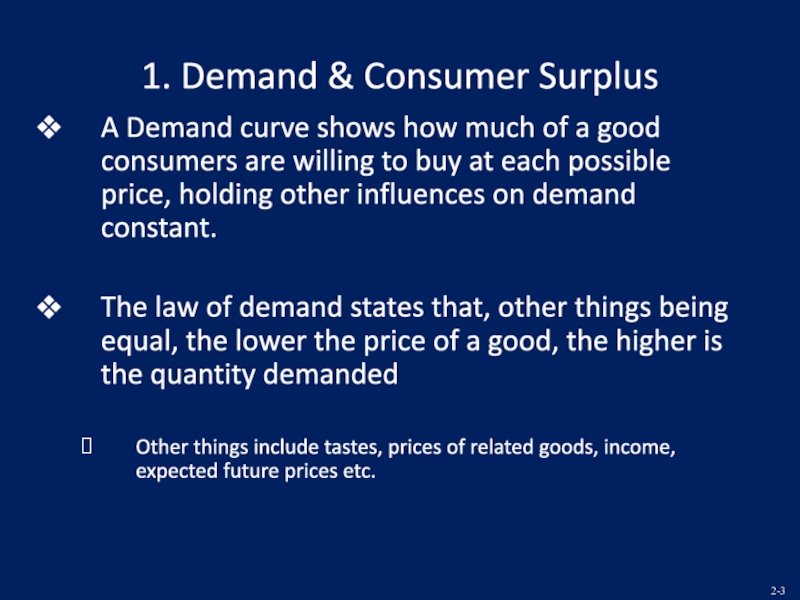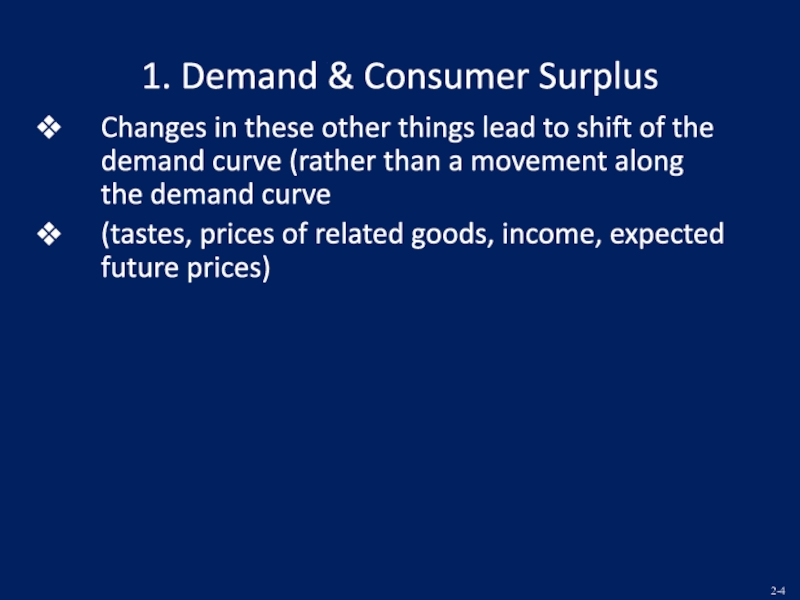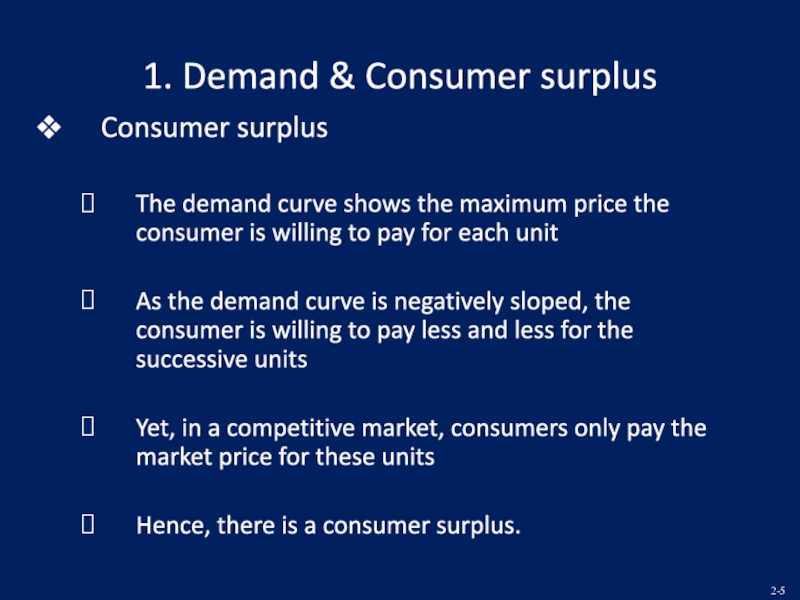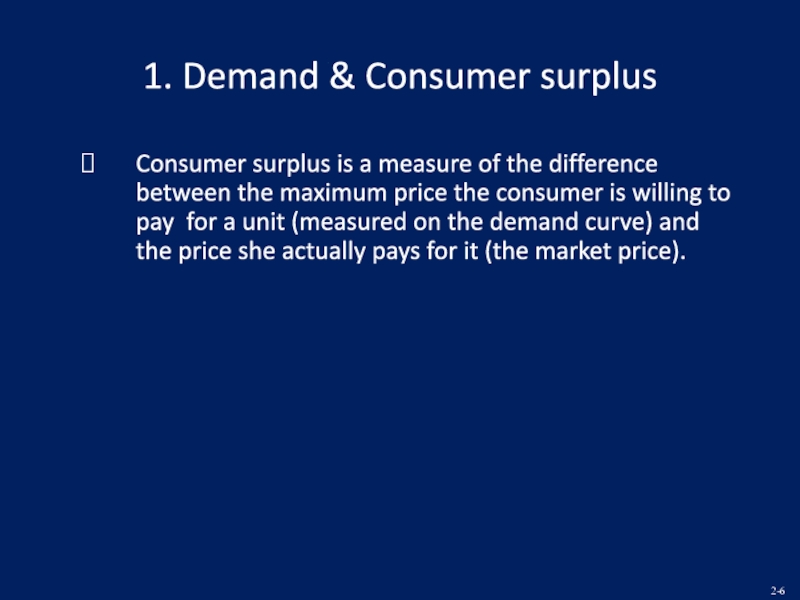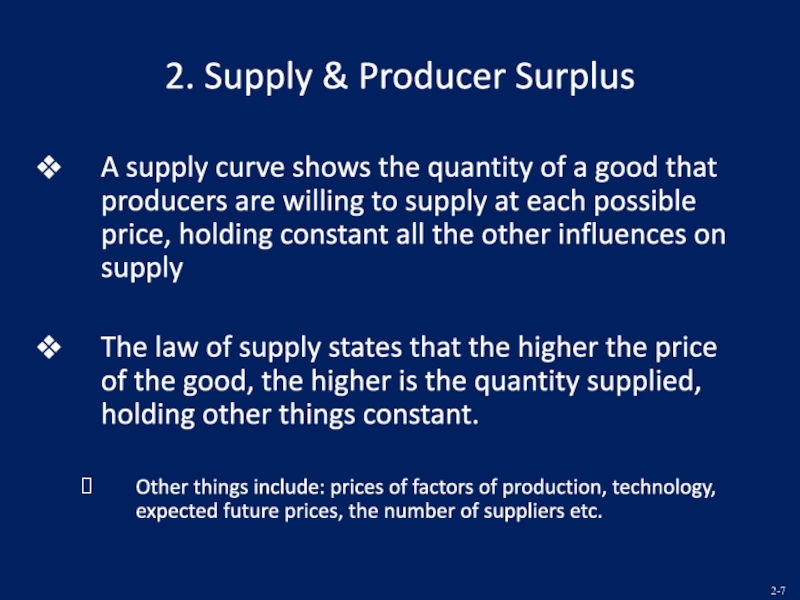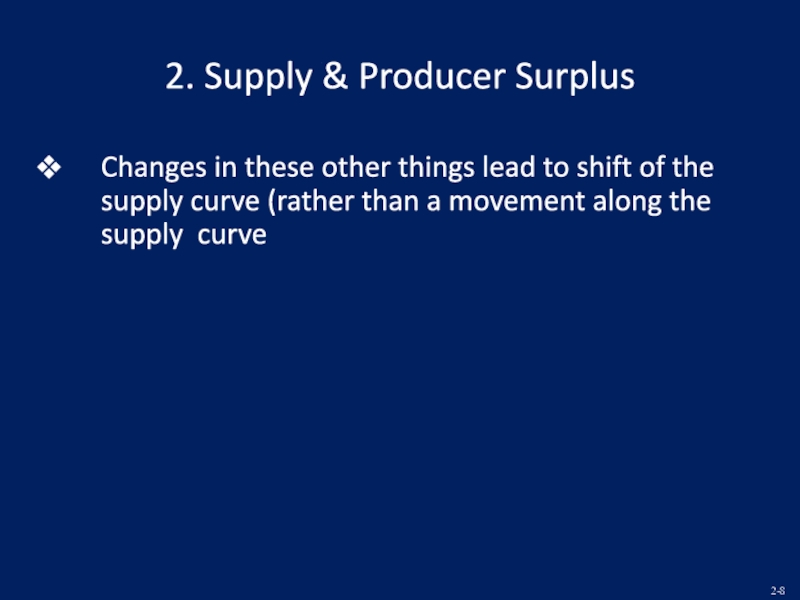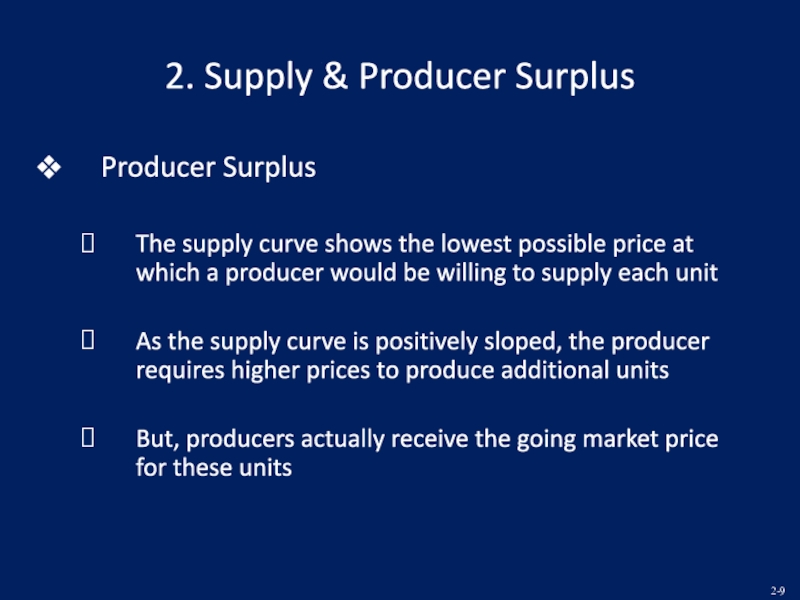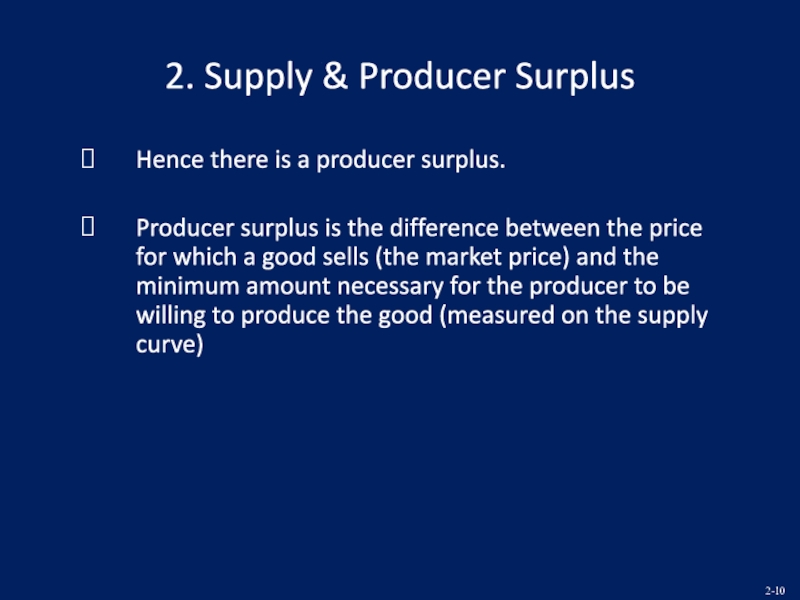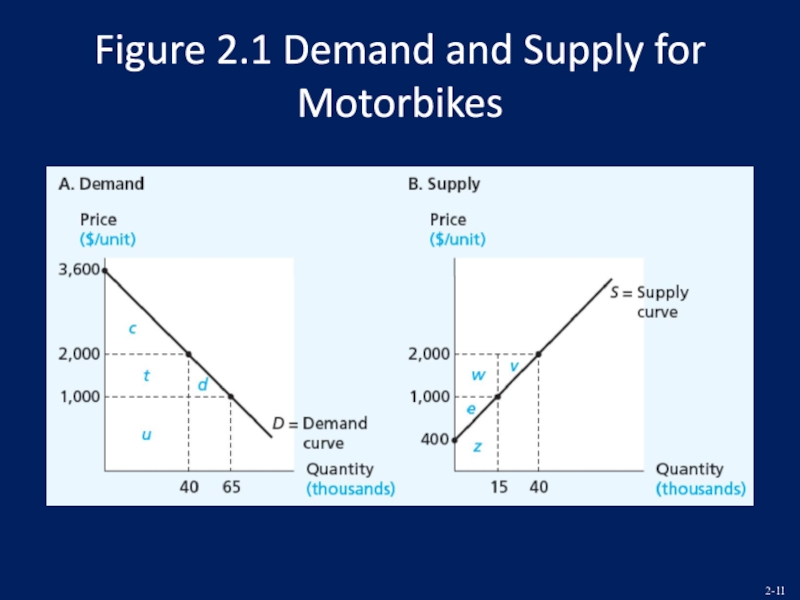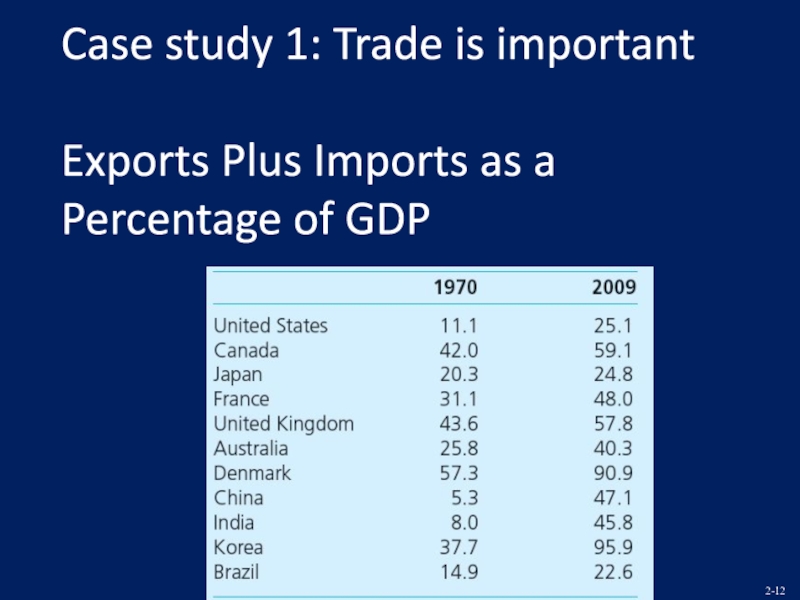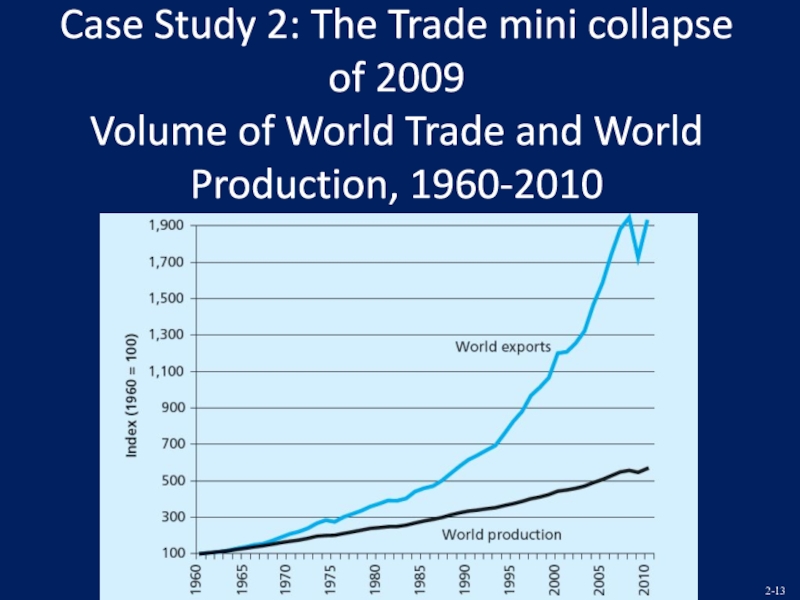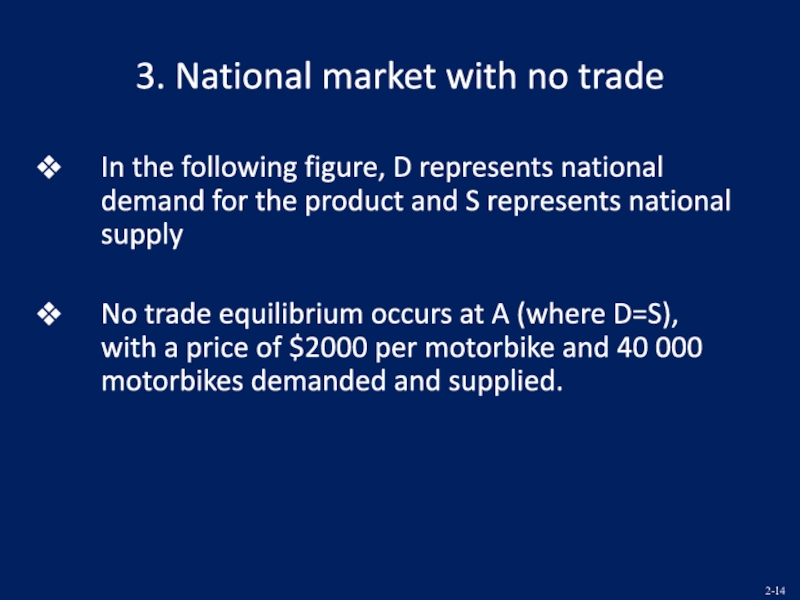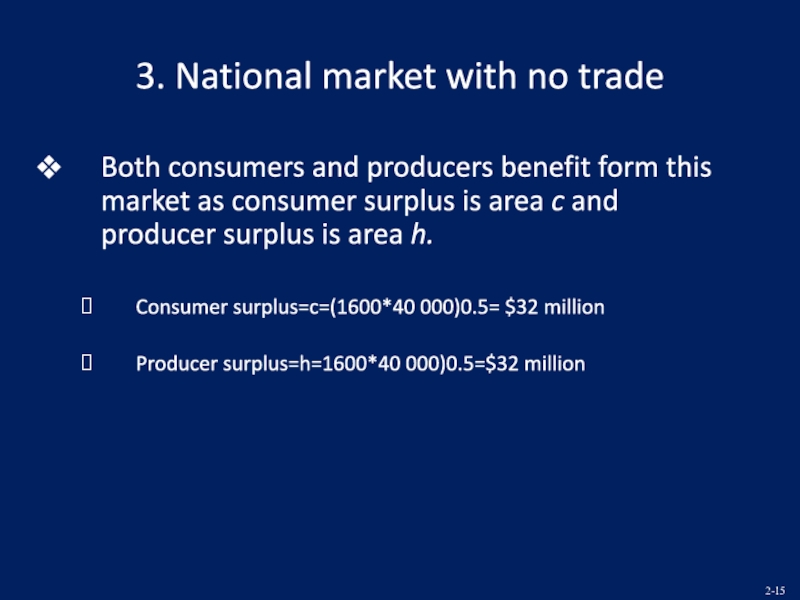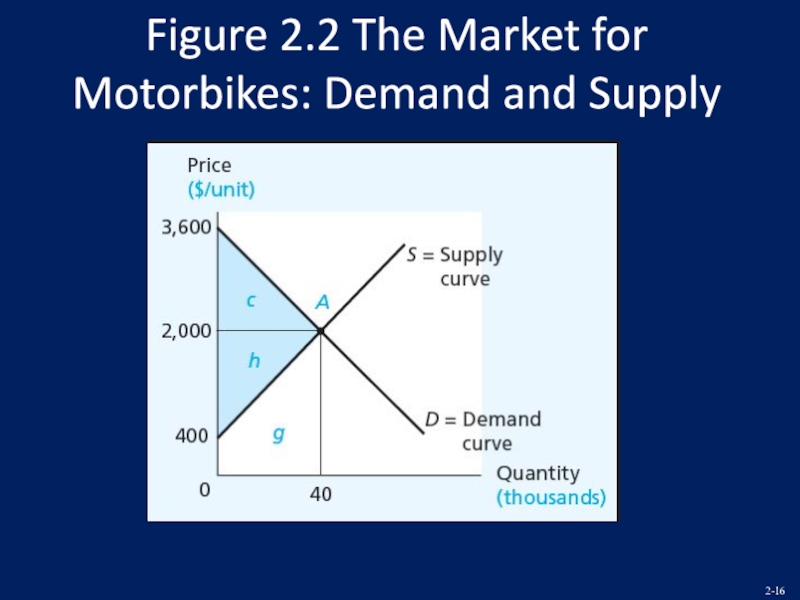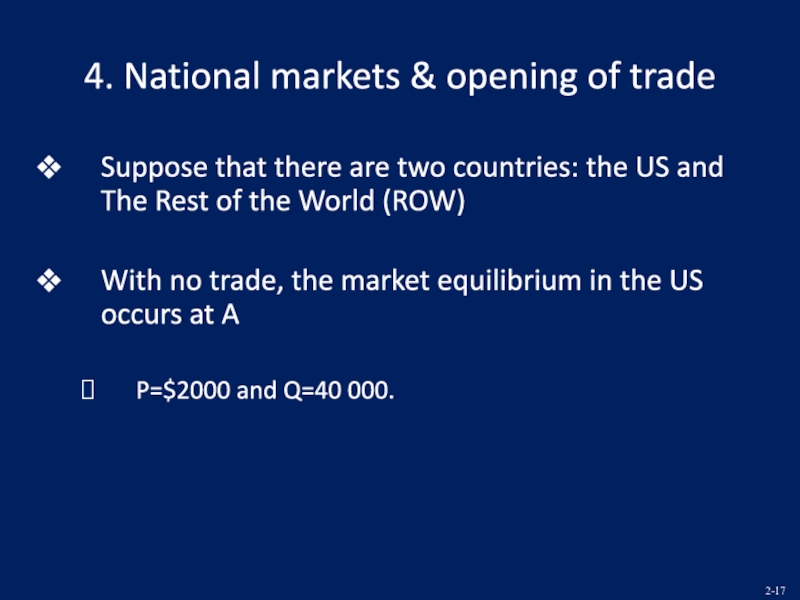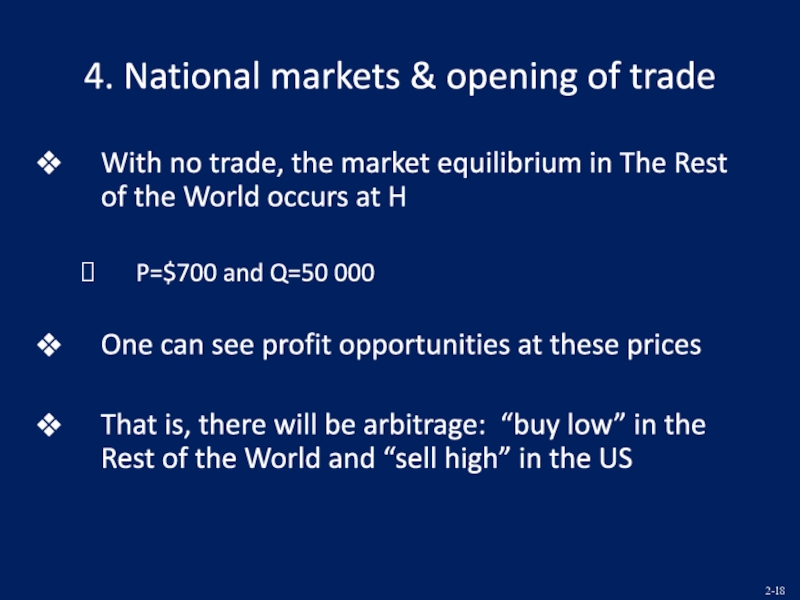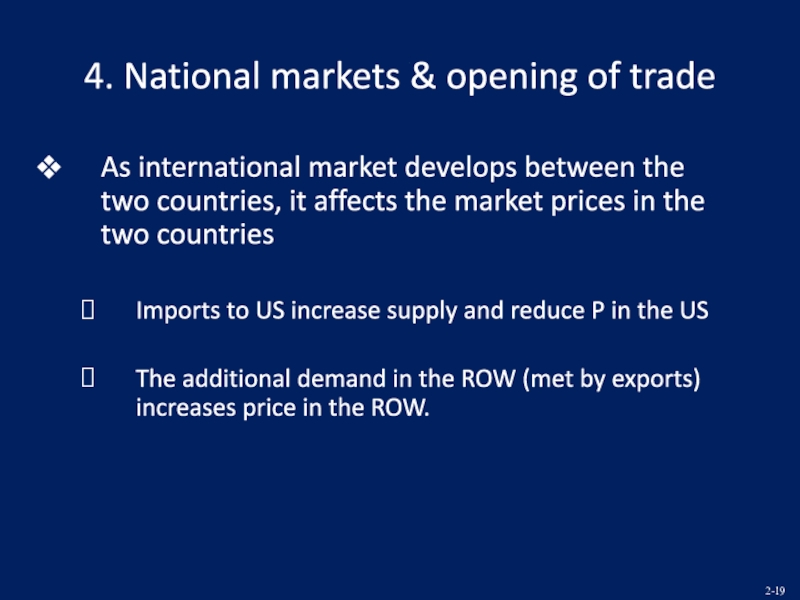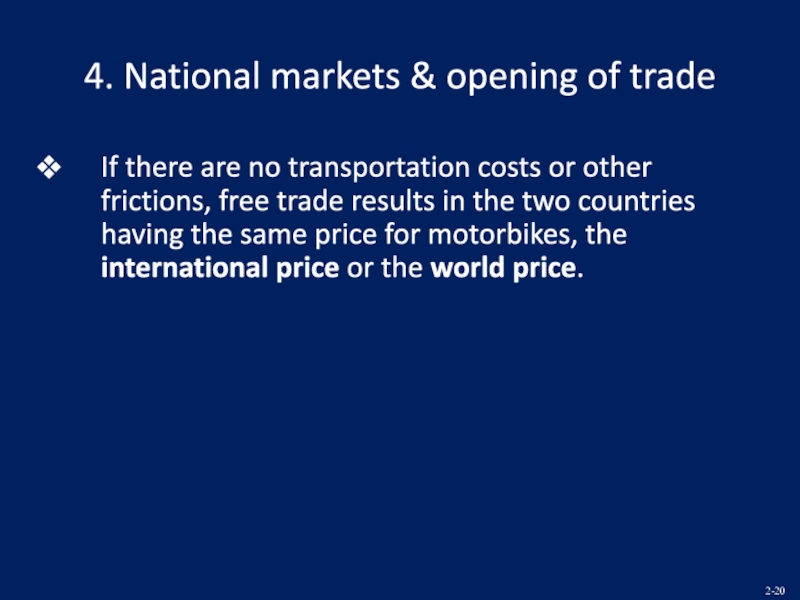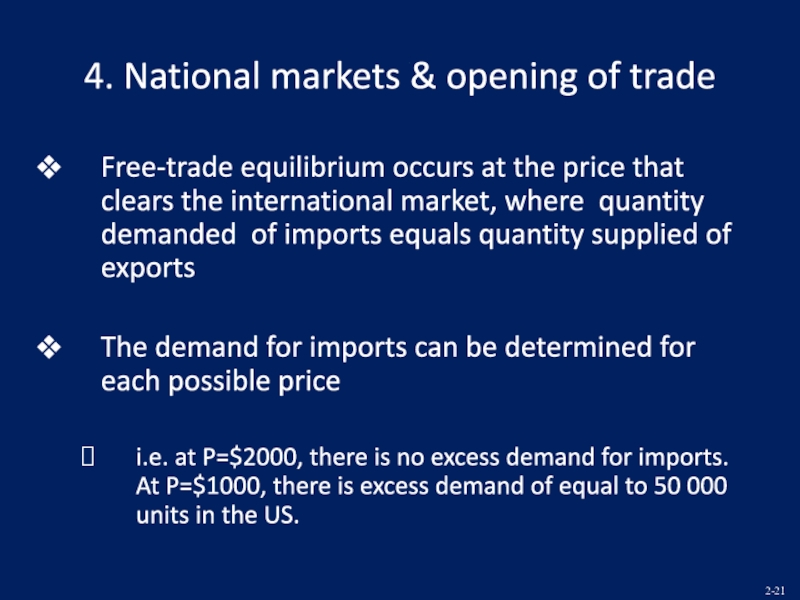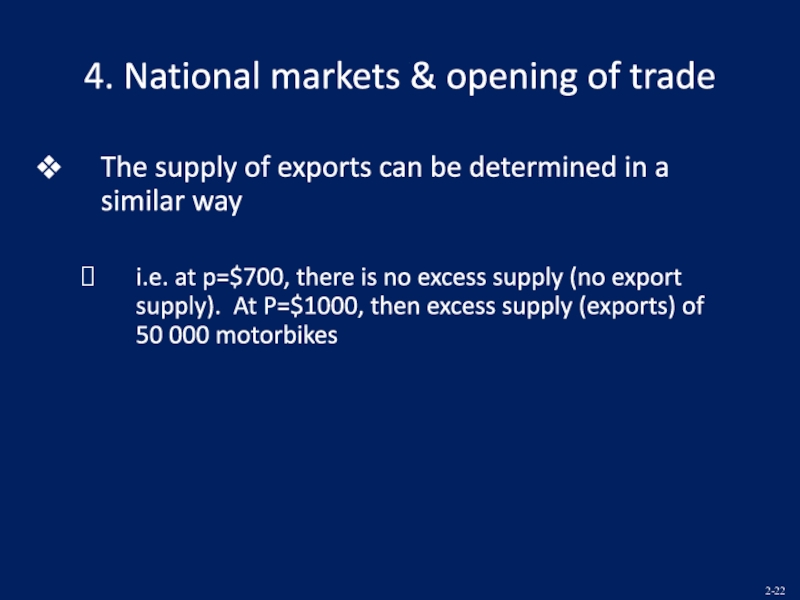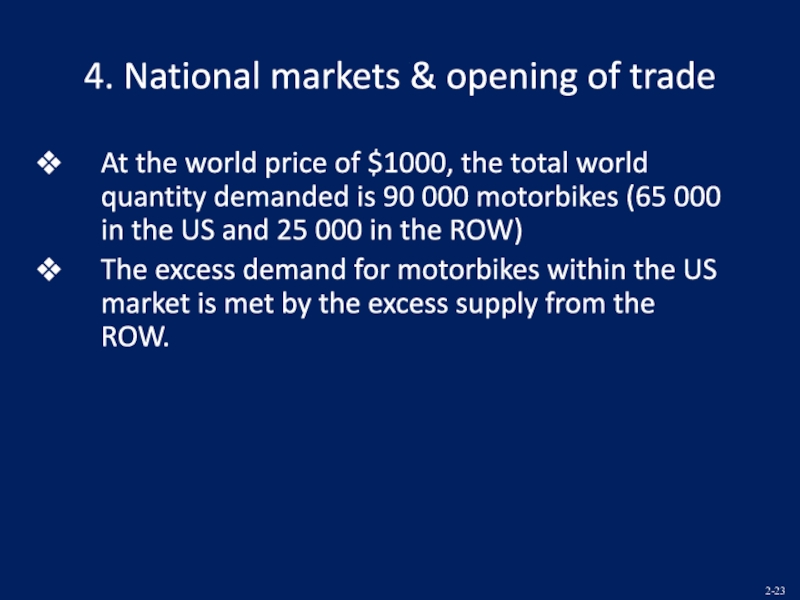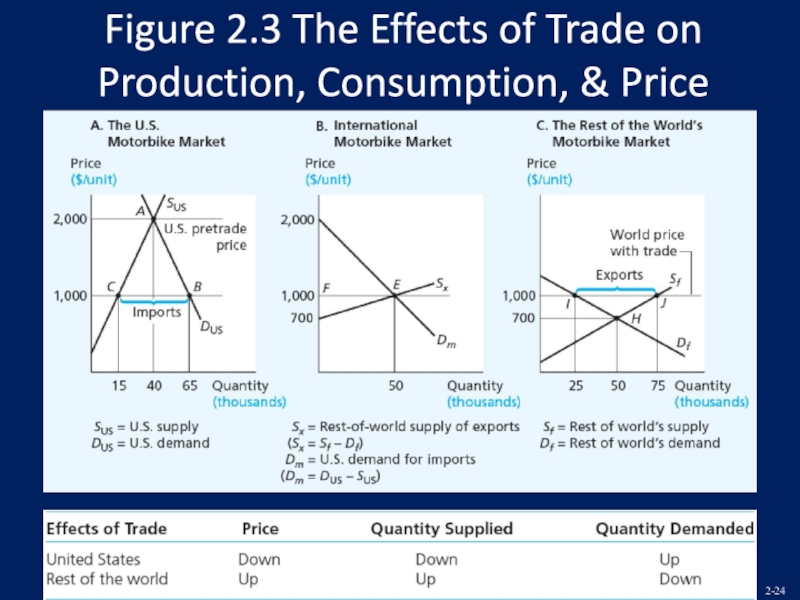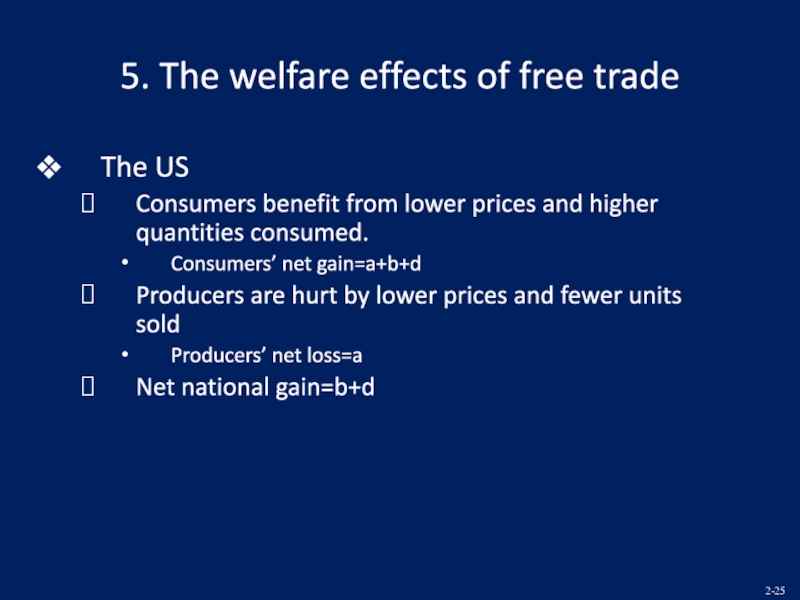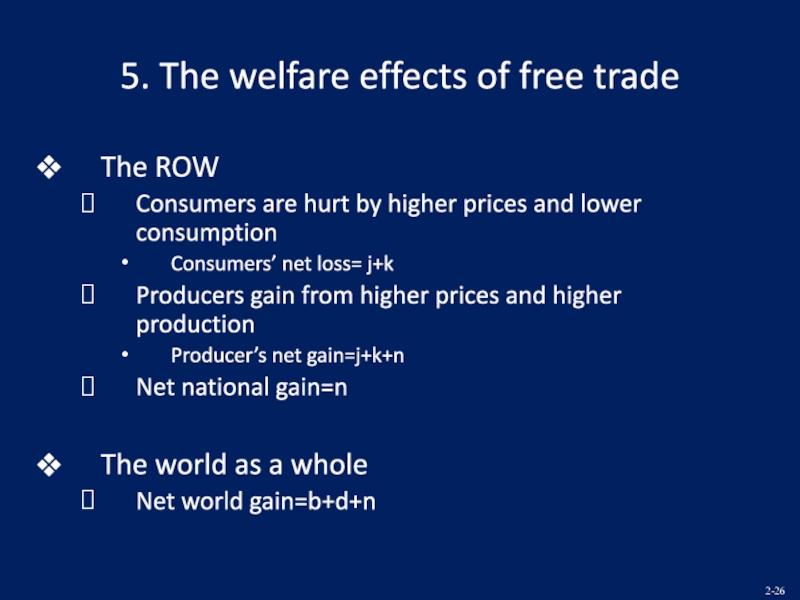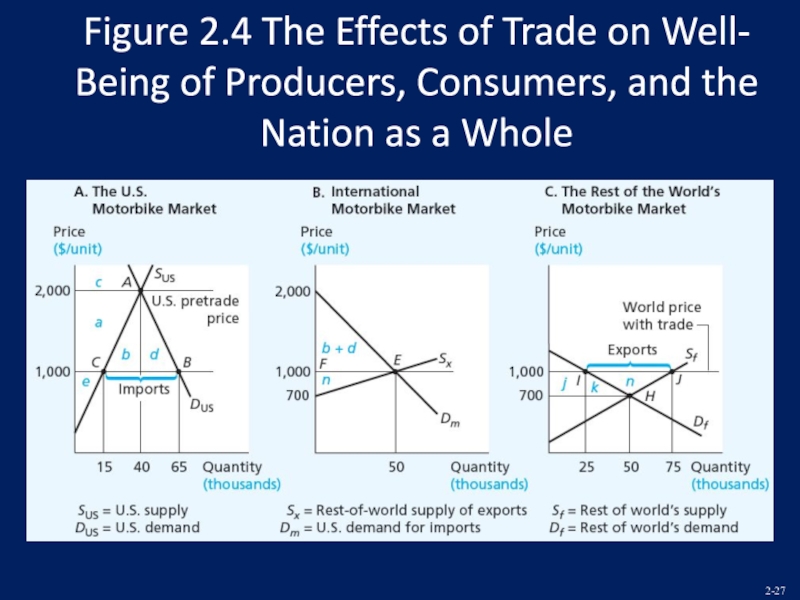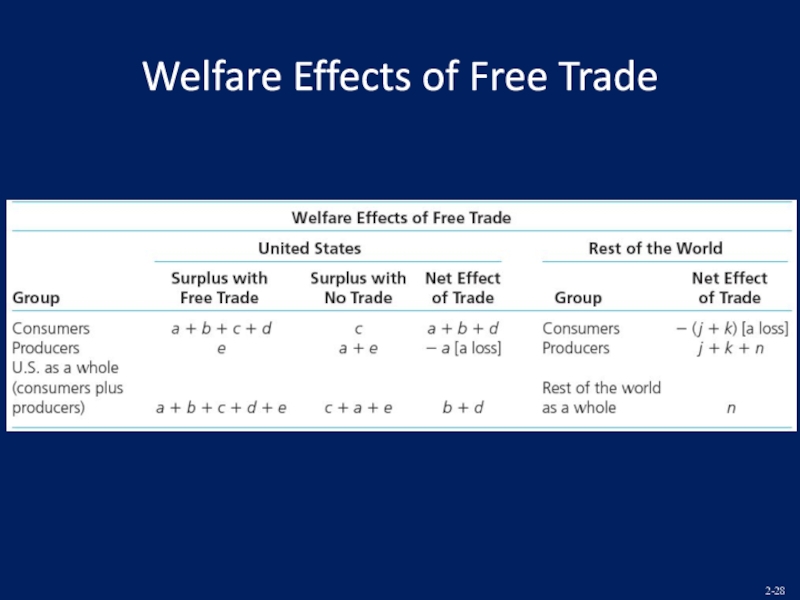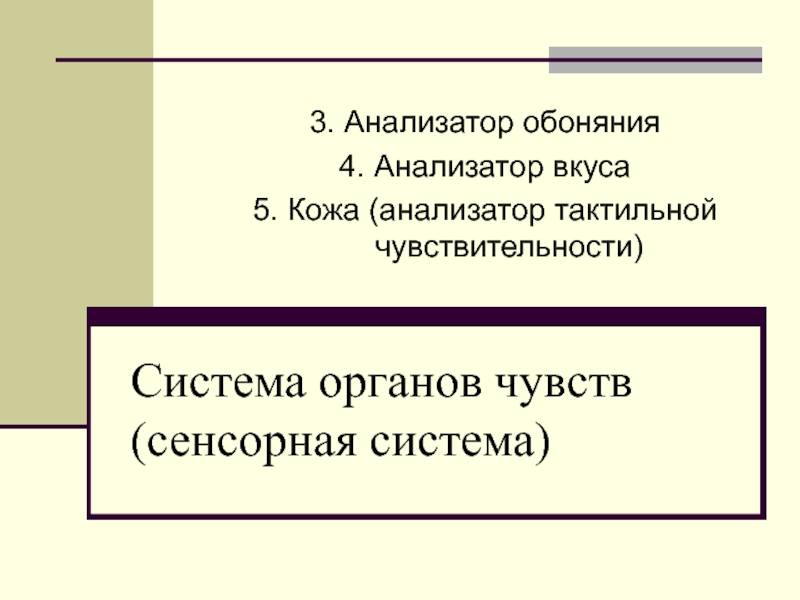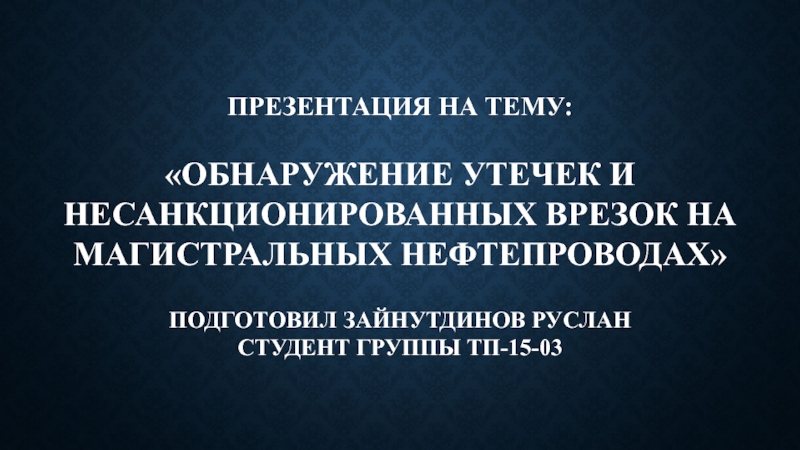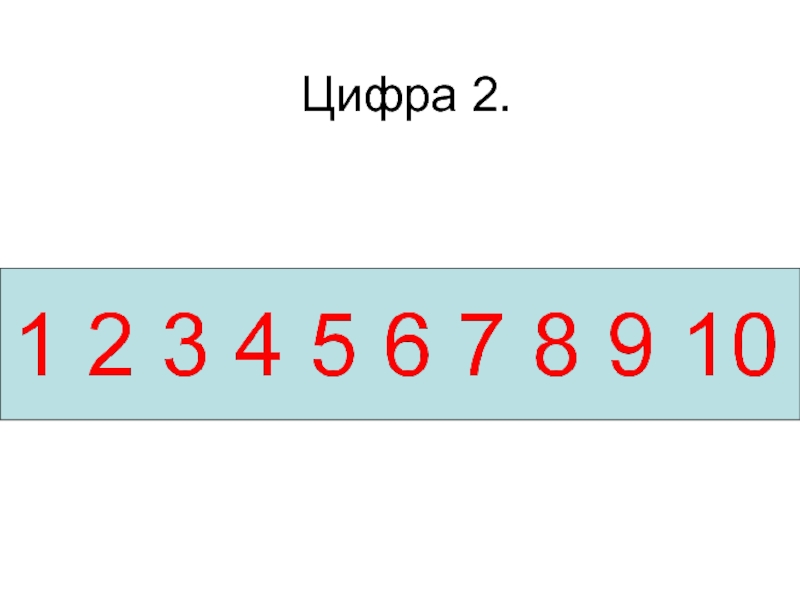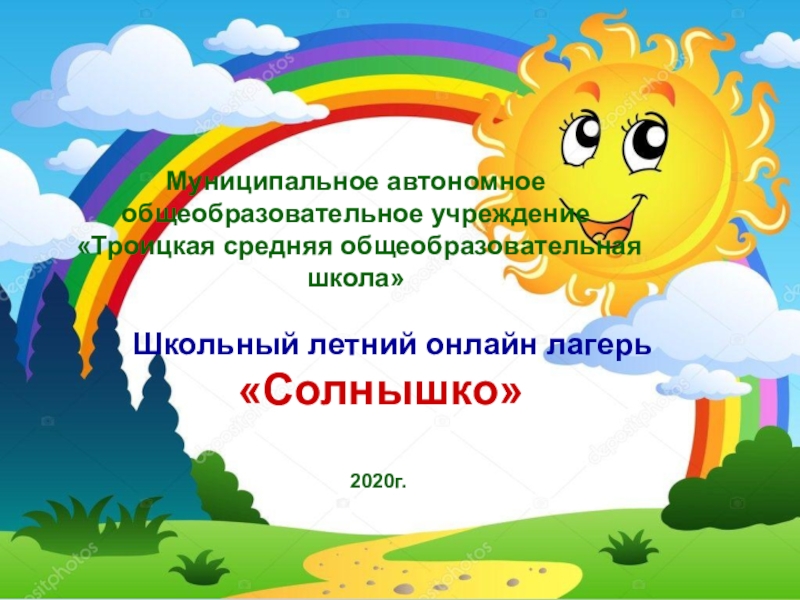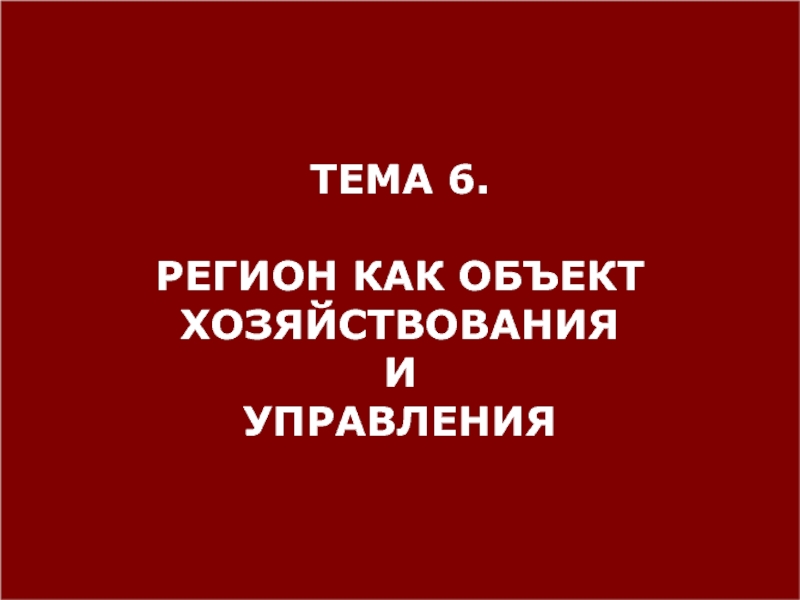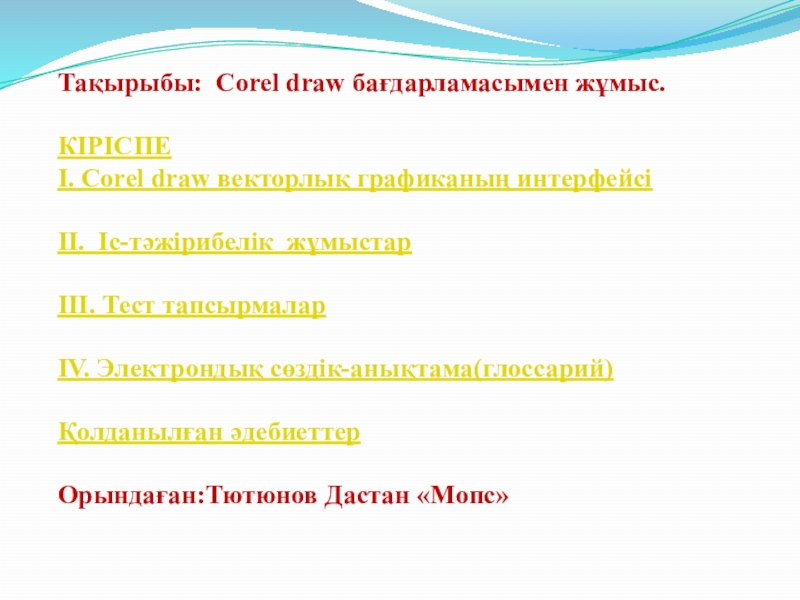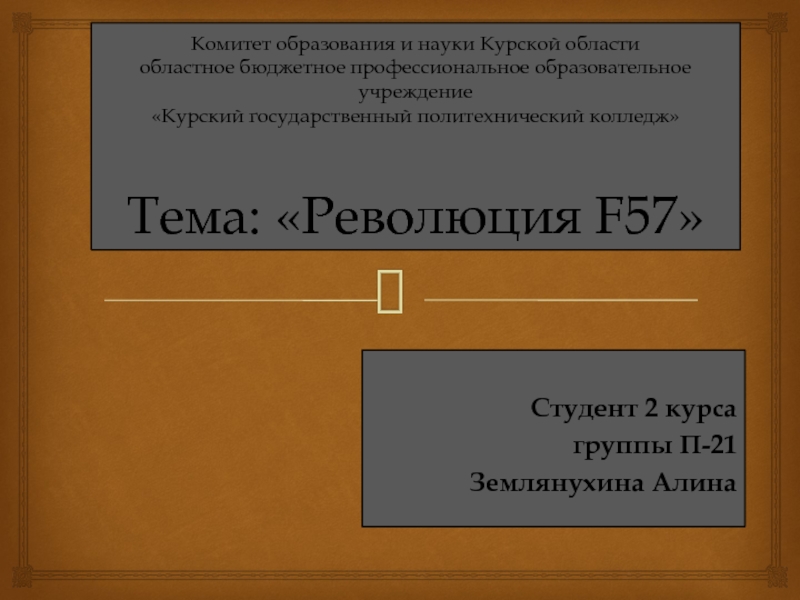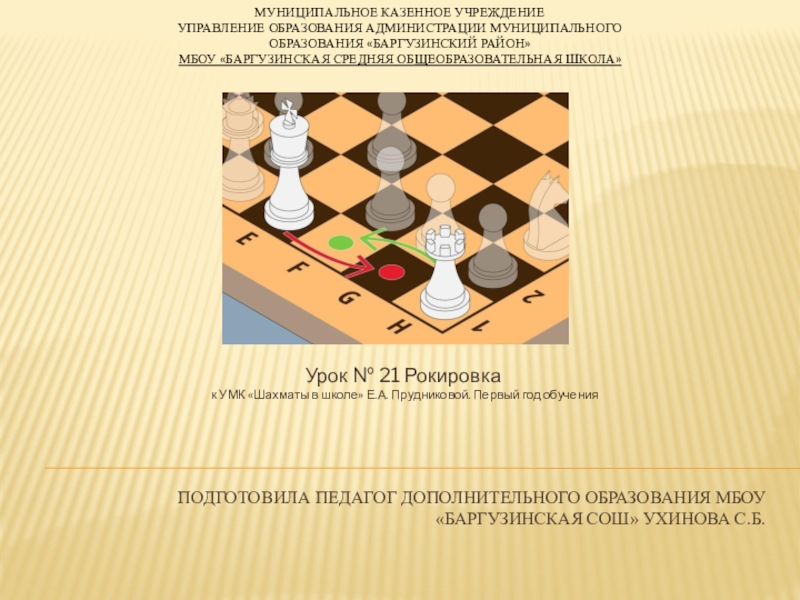Разделы презентаций
- Разное
- Английский язык
- Астрономия
- Алгебра
- Биология
- География
- Геометрия
- Детские презентации
- Информатика
- История
- Литература
- Математика
- Медицина
- Менеджмент
- Музыка
- МХК
- Немецкий язык
- ОБЖ
- Обществознание
- Окружающий мир
- Педагогика
- Русский язык
- Технология
- Физика
- Философия
- Химия
- Шаблоны, картинки для презентаций
- Экология
- Экономика
- Юриспруденция
Week 2: The Basic Theory Using Demand and Supply (Ch. 2)
Содержание
- 1. Week 2: The Basic Theory Using Demand and Supply (Ch. 2)
- 2. Key points Consumer surplus and producer surplusNational welfare with no tradeWelfare effects of free trade
- 3. 1. Demand & Consumer SurplusA Demand curve
- 4. 1. Demand & Consumer SurplusChanges in these
- 5. 1. Demand & Consumer surplusConsumer surplusThe demand
- 6. 1. Demand & Consumer surplusConsumer surplus is
- 7. 2. Supply & Producer SurplusA supply curve
- 8. 2. Supply & Producer SurplusChanges in these
- 9. 2. Supply & Producer SurplusProducer SurplusThe supply
- 10. 2. Supply & Producer SurplusHence there is
- 11. Figure 2.1 Demand and Supply for Motorbikes
- 12. Case study 1: Trade is importantExports Plus Imports as a Percentage of GDP
- 13. Case Study 2: The Trade mini collapse
- 14. 3. National market with no tradeIn the
- 15. 3. National market with no tradeBoth consumers
- 16. Figure 2.2 The Market for Motorbikes: Demand and Supply
- 17. 4. National markets & opening of tradeSuppose
- 18. 4. National markets & opening of tradeWith
- 19. 4. National markets & opening of tradeAs
- 20. 4. National markets & opening of tradeIf
- 21. 4. National markets & opening of tradeFree-trade
- 22. 4. National markets & opening of tradeThe
- 23. 4. National markets & opening of tradeAt
- 24. Figure 2.3 The Effects of Trade on Production, Consumption, & Price
- 25. 5. The welfare effects of free tradeThe
- 26. 5. The welfare effects of free tradeThe
- 27. Figure 2.4 The Effects of Trade on
- 28. Welfare Effects of Free Trade
- 29. Скачать презентанцию
Key points Consumer surplus and producer surplusNational welfare with no tradeWelfare effects of free trade
Слайды и текст этой презентации
Слайд 2Key points
Consumer surplus and producer surplus
National welfare with no
trade
Welfare effects of free trade
Слайд 31. Demand & Consumer Surplus
A Demand curve shows how much
of a good consumers are willing to buy at each
possible price, holding other influences on demand constant.The law of demand states that, other things being equal, the lower the price of a good, the higher is the quantity demanded
Other things include tastes, prices of related goods, income, expected future prices etc.
Слайд 41. Demand & Consumer Surplus
Changes in these other things lead
to shift of the demand curve (rather than a movement
along the demand curve(tastes, prices of related goods, income, expected future prices)
Слайд 51. Demand & Consumer surplus
Consumer surplus
The demand curve shows the
maximum price the consumer is willing to pay for each
unitAs the demand curve is negatively sloped, the consumer is willing to pay less and less for the successive units
Yet, in a competitive market, consumers only pay the market price for these units
Hence, there is a consumer surplus.
Слайд 61. Demand & Consumer surplus
Consumer surplus is a measure of
the difference between the maximum price the consumer is willing
to pay for a unit (measured on the demand curve) and the price she actually pays for it (the market price).Слайд 72. Supply & Producer Surplus
A supply curve shows the quantity
of a good that producers are willing to supply at
each possible price, holding constant all the other influences on supplyThe law of supply states that the higher the price of the good, the higher is the quantity supplied, holding other things constant.
Other things include: prices of factors of production, technology, expected future prices, the number of suppliers etc.
Слайд 82. Supply & Producer Surplus
Changes in these other things lead
to shift of the supply curve (rather than a movement
along the supply curveСлайд 92. Supply & Producer Surplus
Producer Surplus
The supply curve shows the
lowest possible price at which a producer would be willing
to supply each unitAs the supply curve is positively sloped, the producer requires higher prices to produce additional units
But, producers actually receive the going market price for these units
Слайд 102. Supply & Producer Surplus
Hence there is a producer surplus.
Producer
surplus is the difference between the price for which a
good sells (the market price) and the minimum amount necessary for the producer to be willing to produce the good (measured on the supply curve)Слайд 13Case Study 2: The Trade mini collapse of 2009 Volume of
World Trade and World Production, 1960-2010
Слайд 143. National market with no trade
In the following figure, D
represents national demand for the product and S represents national
supplyNo trade equilibrium occurs at A (where D=S), with a price of $2000 per motorbike and 40 000 motorbikes demanded and supplied.
Слайд 153. National market with no trade
Both consumers and producers benefit
form this market as consumer surplus is area c and
producer surplus is area h.Consumer surplus=c=(1600*40 000)0.5= $32 million
Producer surplus=h=1600*40 000)0.5=$32 million
Слайд 174. National markets & opening of trade
Suppose that there are
two countries: the US and The Rest of the World
(ROW)With no trade, the market equilibrium in the US occurs at A
P=$2000 and Q=40 000.
Слайд 184. National markets & opening of trade
With no trade, the
market equilibrium in The Rest of the World occurs at
HP=$700 and Q=50 000
One can see profit opportunities at these prices
That is, there will be arbitrage: “buy low” in the Rest of the World and “sell high” in the US
Слайд 194. National markets & opening of trade
As international market develops
between the two countries, it affects the market prices in
the two countriesImports to US increase supply and reduce P in the US
The additional demand in the ROW (met by exports) increases price in the ROW.
Слайд 204. National markets & opening of trade
If there are no
transportation costs or other frictions, free trade results in the
two countries having the same price for motorbikes, the international price or the world price.Слайд 214. National markets & opening of trade
Free-trade equilibrium occurs at
the price that clears the international market, where quantity demanded
of imports equals quantity supplied of exportsThe demand for imports can be determined for each possible price
i.e. at P=$2000, there is no excess demand for imports. At P=$1000, there is excess demand of equal to 50 000 units in the US.
Слайд 224. National markets & opening of trade
The supply of exports
can be determined in a similar way
i.e. at p=$700, there
is no excess supply (no export supply). At P=$1000, then excess supply (exports) of 50 000 motorbikesСлайд 234. National markets & opening of trade
At the world price
of $1000, the total world quantity demanded is 90 000
motorbikes (65 000 in the US and 25 000 in the ROW)The excess demand for motorbikes within the US market is met by the excess supply from the ROW.
Слайд 255. The welfare effects of free trade
The US
Consumers benefit from
lower prices and higher quantities consumed.
Consumers’ net gain=a+b+d
Producers are
hurt by lower prices and fewer units soldProducers’ net loss=a
Net national gain=b+d
Слайд 265. The welfare effects of free trade
The ROW
Consumers are hurt
by higher prices and lower consumption
Consumers’ net loss= j+k
Producers gain
from higher prices and higher production Producer’s net gain=j+k+n
Net national gain=n
The world as a whole
Net world gain=b+d+n
